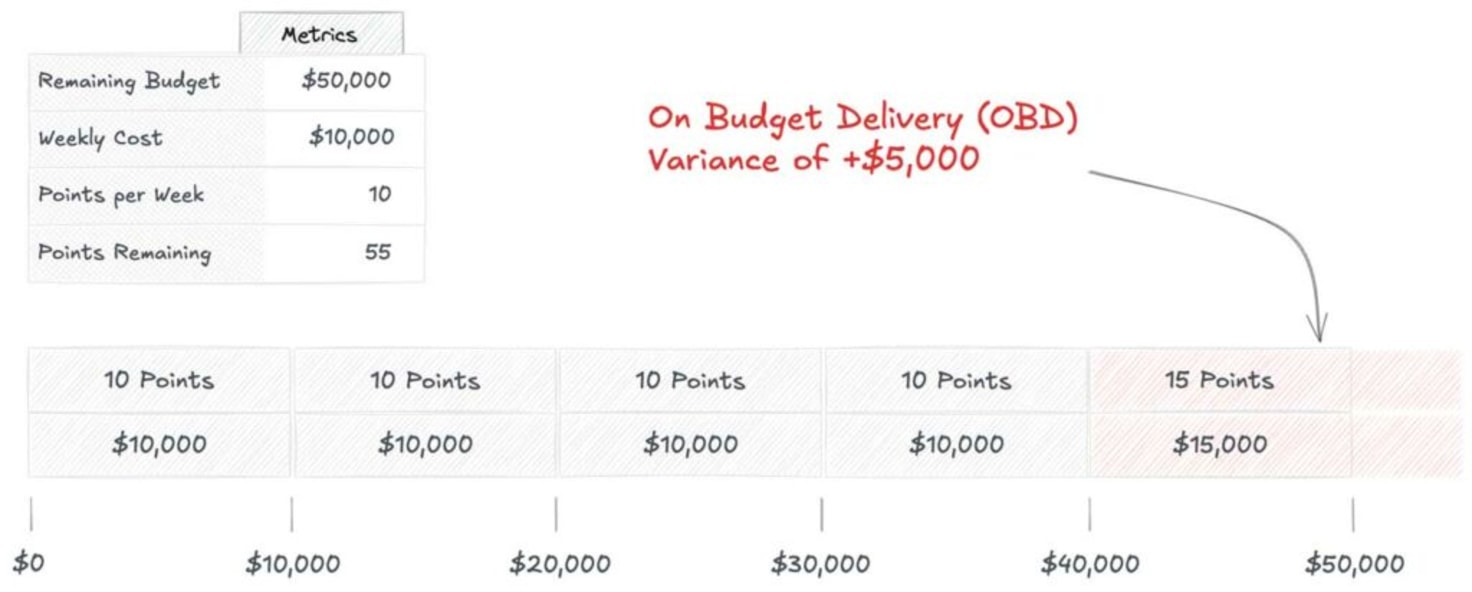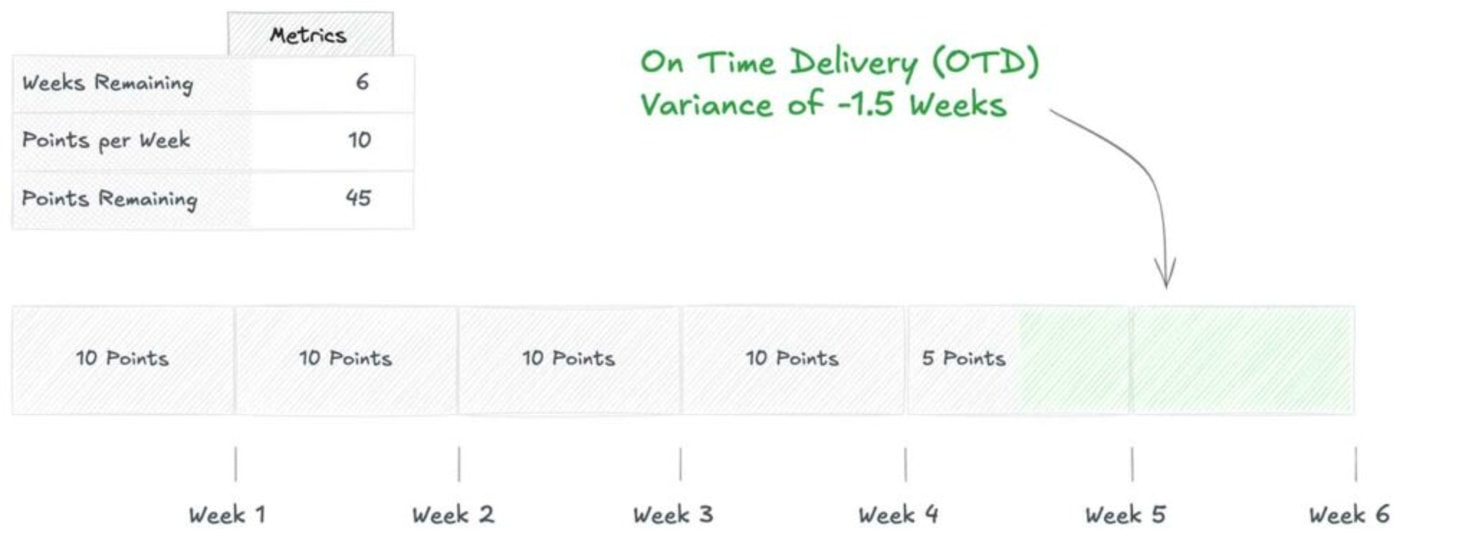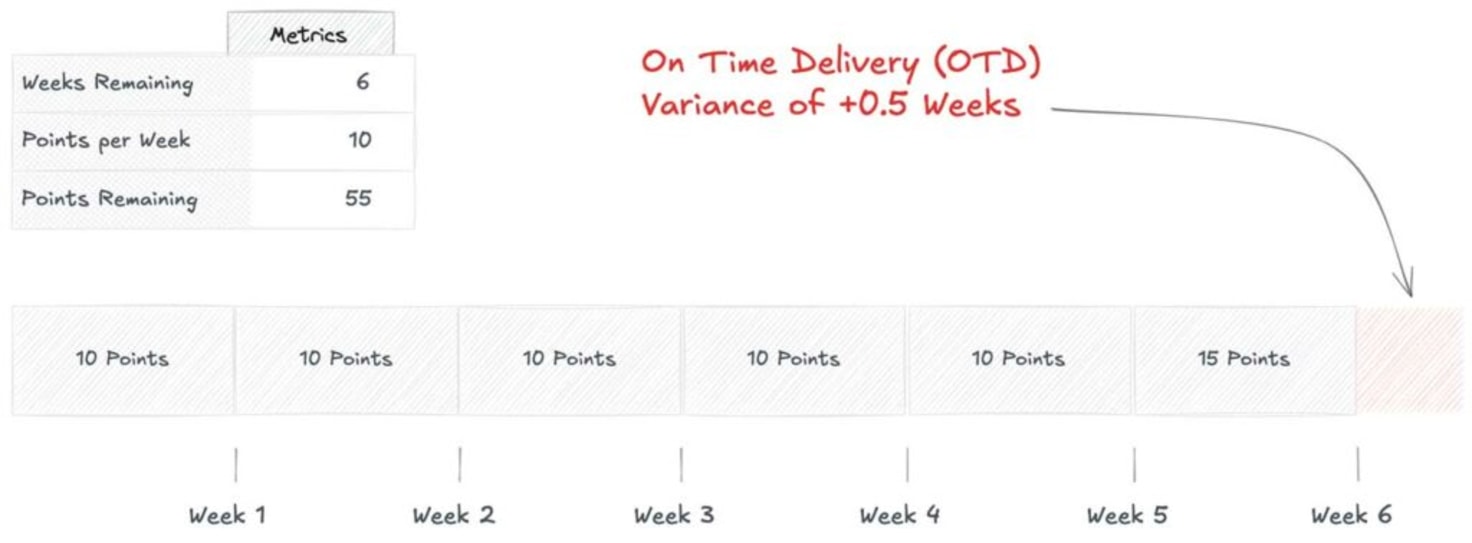At Cuttlesoft, we take great pride in the fact that you trust us with your product, your money, and your customers' experiences. And we believe that it's our responsibility to return the favor in the form of honesty and insight. One way we do this is to share detailed project status information. In fact, we think it would be strange not to share this information freely, so we make it as available and easy-to-interpret as possible.
We always say that bad news doesn't get better with age, so if things aren't going to plan, we want to make you aware as soon as possible to find the best path forward. And if there's unexpected good news, we want to share that with you so you can seize the opportunity.
With those values in mind, we've created a process that gives you a high amount of visibility into our progress with your project. We call them Project Performance Metrics, or PPMs. In this article, we'll explain the Project Performance Metrics, how Cuttlesoft uses them, and how you can use them as well.
Project Performance Metrics
What are Project Performance Metrics?
We track a project's performance in two key areas, budget and time. At the beginning of a project, we estimate the project's budget, scope, and timeline. Each week we track where the project is in relation to that plan, and we answer these questions:
- Is the project on time?
- Is the project within budget?
Why budget and time?
Budget and time are both finite resources, and they're often the least flexible aspects of a project. With PPMs, we aim to keep you informed, so you have confidence that your resources are being used well. We also want to communicate early if a project is deviating significantly from the plan. The sooner we know if the budget or timeline is slipping, the more time we have to evaluate options and identify the best path forward.
For example, suppose a project is behind schedule. In that case, we can discuss adjustments to the due date or the amount of work delivered. Or say you decide that you need an additional feature or that the completion deadline has changed. In that case, we can adjust the budget or timeline to reflect the new scope.
Now that we’ve explained what Project Performance Metrics are and why they matter, let’s get into the details. We’ll show you how we calculate PPMs, how to interpret them, and how we use that information for the benefit of your project.
On Budget Delivery
The calculation we use to identify our financial position is called On Budget Delivery (OBD). This number is a projection of the cost savings or overrun compared to the original budget.
We recalculate this number regularly, accounting for the progress we've made since the last calculation. In this way, we're able to predict the total cost at the end of the project more accurately.
On Time Delivery
Our primary performance indicator for time is On Time Delivery (OTD) -- a projection of how many days ahead or behind schedule the project will finish. As with OBD, we recalculate this number often to evaluate how recent work has impacted the completion timeline.
Key terms and concepts
- Points: Points are the unit we use to measure work, the same way that a warehouse might use the number of packages shipped. Before development starts, we'll break your project into all the small tasks our team needs to complete. Each of those tasks is assigned a point value -- the amount of work we believe it will require. All the points for those tasks add up to the total point value of the project.
- Points remaining: The number of points needed to complete the project.
- Weekly point delivery: This number is an estimate of the number of points the team expects to complete each week.
- Weekly estimated cost: This is the amount we estimate will be billed each week. It is calculated based on the size of the team and the amount of work we expect to complete each week.
- Project delivery date: The target date for all project deliverables to be completed.
Example OBD and OTD Calculations
OBD Variance
Let's look at a practical example of calculating On Budget Delivery (OBD). Imagine we have a project with these parameters:
- Total remaining budget: $50,000
- Team velocity: 10 points per week at $10,000 per week
- Total remaining work: 48 points
In this scenario, our team will work through the points systematically. During the first four weeks, they'll complete 40 points (10 points each week) at a cost of $40,000 ($10,000 per week). For the final week, they'll complete the remaining 8 points at a proportional cost of $8,000. Since the team will only spend $48,000 of the $50,000 budget, this results in a favorable OBD Variance of $2,000 – meaning we're projected to come in under budget.

Now, let's look at another for On Budget Delivery (OBD) where the project parameters are less favorable:
- Total remaining budget: $50,000
- Team velocity: 10 points per week at $10,000 per week
- Total remaining work: 55 points
Over the first four weeks, the team completes 40 points (10 points each week) at a cost of $40,000 ($10,000 per week). Then comes the final phase to complete the remaining 15 points, which will cost $15,000. With a total projected spend of $55,000 against our $50,000 budget, this results in an OBD Variance of $5,000 – indicating we're projected to go over budget.
This example demonstrates how breaking down work into measurable units (points) and tracking our delivery rate (velocity) lets us accurately forecast budget performance weeks in advance. This early insight enables productive conversations about scope adjustments or resource allocation before issues impact the project timeline, staying true to our principle that "bad news doesn't get better with age."

OTD Variance
Let's explore how we calculate On Time Delivery (OTD). Here's our first scenario with these parameters:
- Weeks remaining: 6
- Team velocity: 10 points per week
- Points remaining: 45 points
Over the first four weeks, the team will complete 40 points (10 points per week). The remaining 5 points will take half a week to complete at our standard velocity. Since we'll finish 1.5 weeks earlier than our 6-week timeline, this results in a favorable OTD Variance of -1.5 weeks – indicating we're ahead of schedule.

Now, let's look at another scenario where the timeline is more challenging:
- Weeks remaining: 6
- Team velocity: 10 points per week
- Points remaining: 55 points
At our standard velocity of 10 points per week, we'll complete 50 points in the first five weeks. The remaining 5 points will require half a week to complete. This puts us at 5.5 weeks total against our 6-week timeline, resulting in an OTD Variance of +0.5 weeks – behind schedule.

Key Takeaways
As a Cuttlesoft client, you’ll receive Project Performance Metrics in your inbox each week of the project. Now that you know how to interpret them, there are two key takeaways that we hope will stick with you.
- No surprises - The future is always uncertain, but we aim to avoid surprises whenever we can. OTD and OBD are projections of where things will stand by the end of the project. Having a reliable estimate of what things will look like five, ten, or twenty weeks from now guides the choices we make today.
- Full Support - We pay close attention to the trends and patterns of a project because they have real consequences for our customers. We want you to have confidence that we are paying attention to your project's performance and will use the findings to improve our own work and help us guide you.


